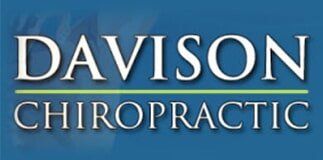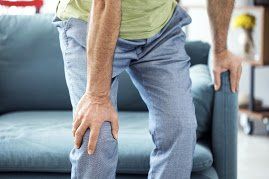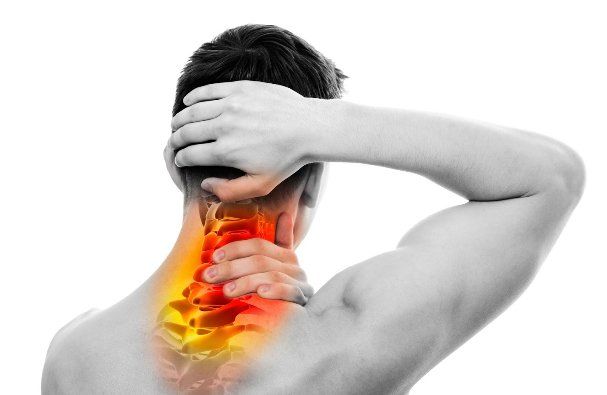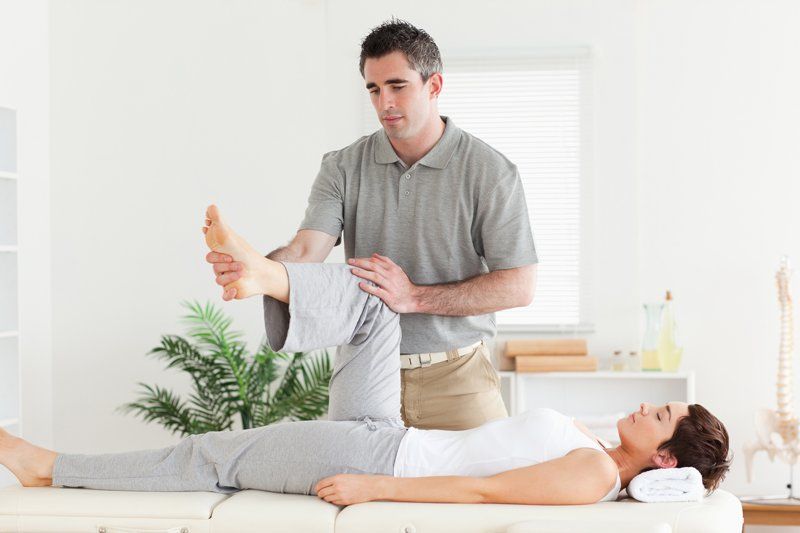Sciatic Nerve Pain and How Chiropractic Care Can Help
Admin • June 27, 2019

Sciatic nerve pain is a bothersome symptom of different conditions. The pain of sciatica can affect your quality of life if left untreated. When it's severe enough, sciatic nerve pain can cause you difficulty in standing, sitting, or even sleeping. Find out what sciatica is and how chiropractic care can help.
Basics of Sciatica
Sciatica is nerve pain. The sciatic nerve runs from your lower spine to your heel via the buttocks and back of the leg. When inflamed, the nerve produces a radiating pain. While the pain can affect any part of the long sciatic nerve, it usually follows the path of the nerve.
You can feel discomfort anywhere along the pain spectrum. Common feelings include the following:
- Numbness
- Mild ache
- Burning
- Electric shock
- Sharp pain
The pain comes and goes, though you usually feel some level of discomfort continuously. Long periods of sitting can make the sciatic nerve pain worse.
Causes of Sciatic Nerve Pain
One of the most common causes for sciatica is a herniated disc. Your spine is made up of vertebrae separated by discs of flexible tissue surrounding a soft center. If the soft center gets displaced and begins to push out, the resultant condition is a herniated disc. With sciatica, the displaced disc is pushing against the sciatic nerve, causing irritation to the nerve and pain to you.
Several factors can cause a herniated disc. Age is a common factor — the hard outer portion of the disc can weaken over time, letting the soft center become displaced. You can also injure your back by lifting heavy objects improperly or twisting while lifting. Being sedentary — say, at a desk — can contribute to the issue.
Sciatic nerve pain can have other causes as well. An adjacent bone spur or tumor pressing on the nerve can also cause the pain. Internal bleeding, infection, and acute injury are serious causes of sciatic nerve pain and require medical diagnosis.
Chiropractic Care for Sciatica
Chiropractors specialize in the treatment of the nervous and musculoskeletal systems. As such, they may be uniquely qualified to treat sciatica caused by a herniated disc.
Typically, a chiropractor starts with a comprehensive evaluation to determine if you're a good candidate for chiropractic treatment. The evaluation can include assessment of your posture and spinal alignment as well as medical history.
If you're a good candidate for chiropractic treatment for your sciatic nerve pain, you'll likely undergo manual manipulation. With this treatment, chiropractors apply a high-velocity arm thrust directly to the misaligned vertebra.
Sometimes a misaligned pelvis can contribute further to sciatic nerve pain. When this is the case, the chiropractor might put the patient in a position to stretch the lower back and apply pressure to the sacroiliac joint to re-align the pelvis.
In addition to chiropractic adjustments to re-align the skeletal system, chiropractors often employ other treatments. These treatments can include mobilization, which is a low-velocity manipulation by way of stretches. They might also combine adjustments with massages to relieve muscle pain when the spine is re-aligned.
Some other therapies that chiropractors employ include the use of a TENS (transcutaneous electrical nerve stimulation) unit. Electrodes attached to the patient's body send small waves of electricity to stimulate the muscle and reduce muscle spasms. Another option for reducing muscle spasms is ultrasound, which produces a gentle heat and increases blood flow.
Other Treatments for Sciatica
Other treatments for sciatic nerve pain run the gamut from over-the-counter painkillers to surgery. Painkillers such as ibuprofen help alleviate the pain, as do hot or cold compression packs. Physical activity can also alleviate the symptoms of sciatica, since the condition is exacerbated by prolonged sitting.
For serious cases of sciatica, you may need to see a medical doctor. Doctors sometimes prescribe cortisone shots to alleviate any swelling in the area. However, surgery to widen the spinal cord or remove the herniated disc may be necessary if nothing else alleviates the pain.
Don't suffer through sciatica — seek treatment for the pain. Visit Davison Chiropractic to discover if you're a good candidate for chiropractic care for sciatica.

Cold laser therapy, also called low-level laser therapy (LLLT) or low-power laser therapy (LPLT), is a non-surgical pain management treatment suitable for some patients who experience back and neck pain or certain injuries. Chiropractors and other health care professionals apply cold laser therapy to the pained or inflamed areas. The procedure uses a low-level laser that emits near-infrared light. The light from the laser is able to penetrate the skin and reach the body's deeper tissues. Once the tissues absorb the light, it interacts with the body's cells and speeds up the healing process. The laser light also helps reduce pain and swelling in damaged tissues. Uses Cold laser therapy is used primarily on patients who have chronic musculoskeletal pain. While the treatment works on different parts of the body for different injuries, like ligament and muscle strains, patients who have lasting lower back or neck pain often find relief from laser therapy. Cold laser therapy also helps patients who have arthritis, fibromyalgia, carpal tunnel syndrome, hip bursitis, and temporomandibular joint dysfunction (TMJ). Procedure and Results A single treatment session of cold laser therapy is typically short. Most health care professionals who administer the treatment spend 30 seconds to several minutes holding the handheld laser over the affected areas. Treatment sessions that cover a large area, such as the entire lower back, take longer since the laser device will need to be moved around to target one smaller area at a time. The procedure isn't painful, and you won't feel any vibration or hear any noise. Some patients can feel the laser, but most do not report it as uncomfortable. There is no standard for the number and frequency of cold laser therapy treatments. How many sessions you'll need depends on the severity and type of your condition and how well previous treatment sessions work. You may have to wait several weeks to a month to see the full benefit of cold laser therapy, and some patients need to have several short sessions a week to get maximum relief. Cold laser therapy has been the subject of multiple studies that have shown generally favorable results, though many of the studies have small participant groups. This treatment is FDA-approved, so you know it’s safe and effective. Advantages and Disadvantages One of the biggest advantages of cold laser therapy is that it is a non-invasive treatment method. Since cold laser therapy doesn't lead to any downtime for healing, it can be a good treatment choice for patients who experience pain but have busy lifestyles. The therapy also doesn't involve the use of any medications, which makes it appealing to patients seeking drug-free ways to manage their pain. However, you can combine it with medications and other treatment methods to provide additional relief. The main disadvantage many patients report is that cold laser therapy doesn't work immediately. Most patients need multiple treatment sessions — as many as 30 — to see a significant reduction in inflammation and pain. Another downside to cold laser therapy is that some health insurance providers won't cover the cost of the treatment. But some health care practitioners offer billing or payment plans to help patients afford the cost of the treatment. Risks Cold laser therapy is approved for use by the FDA, and it is considered safe for most patients. The treatment has very few side effects and is tolerated very well by most people. Testing on pregnant women is lacking, so pregnant women shouldn't have cold laser therapy. People who have open sores, suspicious moles, or cancerous lesions shouldn't expose their skin to lasers. Davison Chiropractic offers chiropractic adjustments, massage therapy, and pain management treatments to patients in Davison and Lapeer, Michigan and the surrounding areas. Contact us today to schedule an appointment.














